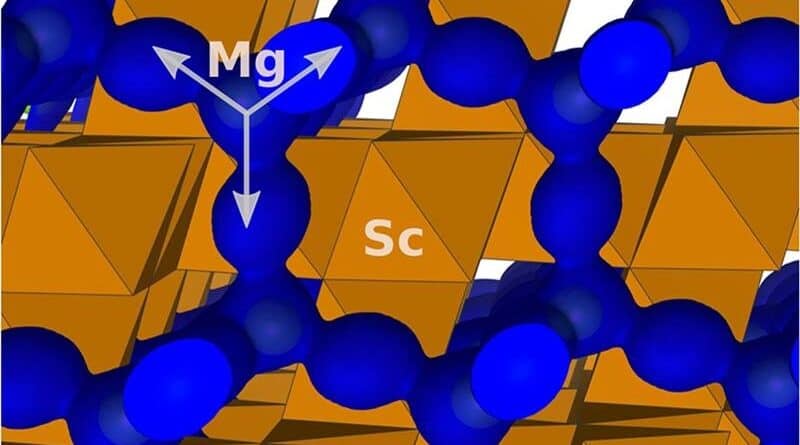
With relatively low costs and a more robust supply chain than conventional lithium-ion batteries, magnesium batteries could power EVs and unlock more utility-scale energy storage, helping to shepherd more wind and solar energy into the grid. That depends on whether or not researchers can pick apart some of the technology obstacles in the way. The going has been slow, but recent developments indicate that things are moving in the right direction.
Magnesium Batteries Solve Their Dendrite Problem
Magnesium batteries have been talked up quite a bit since the early 2000s. They dropped off the CleanTechnica radar about five years ago, but some key advances are beginning to crop up, and now would be a good time to catch up (see our magnesium archive here).
One particularly interesting piece of news involves the dendrite problem, which are the tiny fernlike growths that form inside rechargeable batteries, leading to short circuits and a shorter lifespan. Dendrites are a familiar challenge in the lithium-ion field, and magnesium batteries can suffer the same indignities.
That particular problem has been resolved by a multinational research team based at RMIT University in Australia, which has been working on an aqueous metal-ion magnesium energy storage formulation. Also called a “water battery,” the device uses water instead of the organic electrolytes deployed in lithium-ion batteries.
Aqueous magnesium batteries are plagued by a number of challenges, including low voltage, which is a potential deal breaker. Nevertheless, so far the team has achieved an energy density of 75 watt-hours per kilogram, which team leader and RMIT Distinguished Professor Tianyi Ma describes as 30% of the density of the newest Tesla EV batteries.
The team used protective coatings of bismuth and bismuth oxide to prevent dendrites, which brings the lifespan of their battery to a level that compares favorably with lithium-ion batteries according to Ma.
“With impressive capacity and extended lifespan, we’ve not only advanced battery technology but also successfully integrated our design with solar panels, showcasing efficient and stable renewable energy storage,” Ma emphasized.
The Magnesium Advantage
Lifespan is just one of the technology challenges that magnesium batteries need to overcome, so at this point it’s worth pausing to ask why researchers are pursuing magnesium technology, when lithium-ion batteries are already here, now, and on the market.
That’s a good question. Part of the answer has to do with battery safety and lifecycle. The use of a water electrolyte provides magnesium batteries with two distinct advantages, one being the elimination of safety risks that can be posed by the organic electrolytes used in conventional lithium-ion batteries. The other advantage is a more eco-friendly end-of-life scenario.
“Addressing end-of-life disposal challenges that consumers, industry and governments globally face with current energy storage technology, our batteries can be safely disassembled and the materials can be reused or recycled,” Ma notes.
“We use materials such as magnesium and zinc that are abundant in nature, inexpensive and less toxic than alternatives used in other kinds of batteries, which helps to lower manufacturing costs and reduces risks to human health and the environment,” he adds.
Another project aimed at reducing environmental hazards surfaced last summer, when a research team from the Korea Institute of Science and Technology published a study that describes an additive-free, simple salt formula for aqueous magnesium-ion batteries.
“Our activation strategy enabled the efficient cycling of Mg full-cell candidates using commercially available electrolytes, thereby offering possibilities of building practical Mg batteries,” they reported.
Meanwhile, last year, a research team in China developed an aqueous battery with a copper foam add-on to work around the voltage issue. They reported “exceptional performance with an ultra-high capacity (205 mAh g-1 , 243 Wh kg-1 at 5 A g-1 )” for their new battery, “as well as excellent cycling stability after 600 cycles and rate capability (138 mAh g-1 , 81 Wh kg-1 at 10 A g-1 ).”
Magnesium Batteries And The Energy Transition
Circling back to the benefits of adding magnesium batteries to the planet-saving toolkit, another factor to consider is the rapid acceleration of the energy storage field. In an interview published in 2022, Argonne National Laboratory chemist Brian Ingram noted lithium-ion batteries are doing just fine — for now.
“However, as the energy storage landscape continues to evolve into other applications and energy sectors — particularly in terms of decarbonizing our future — energy storage will face new technical and cost challenges that will require us to find cheaper batteries, better supply chains, faster charging rates, discharge over longer periods, improved safety and longer lifetimes,” Ingram explained.
